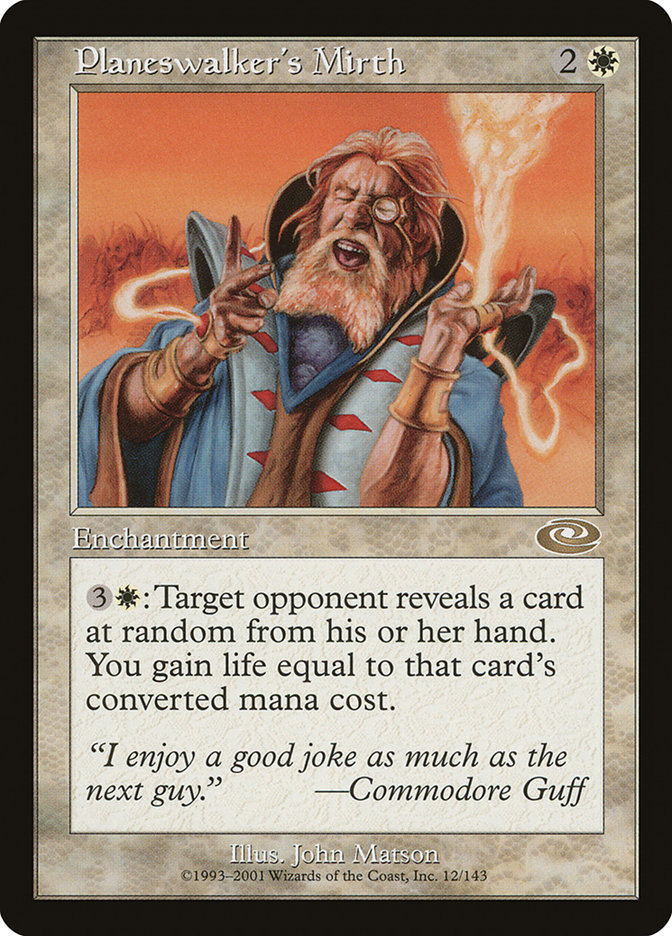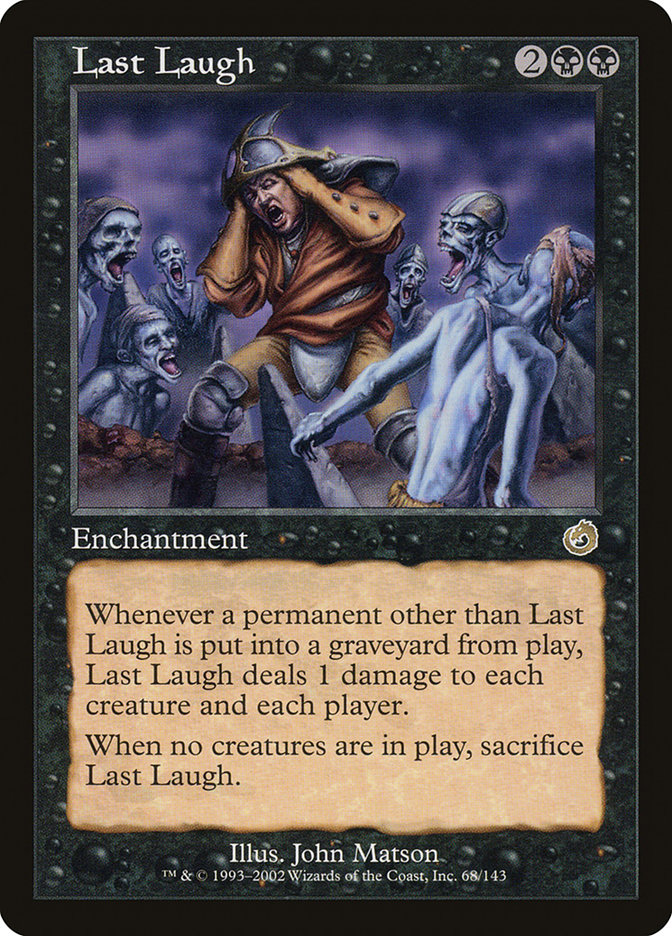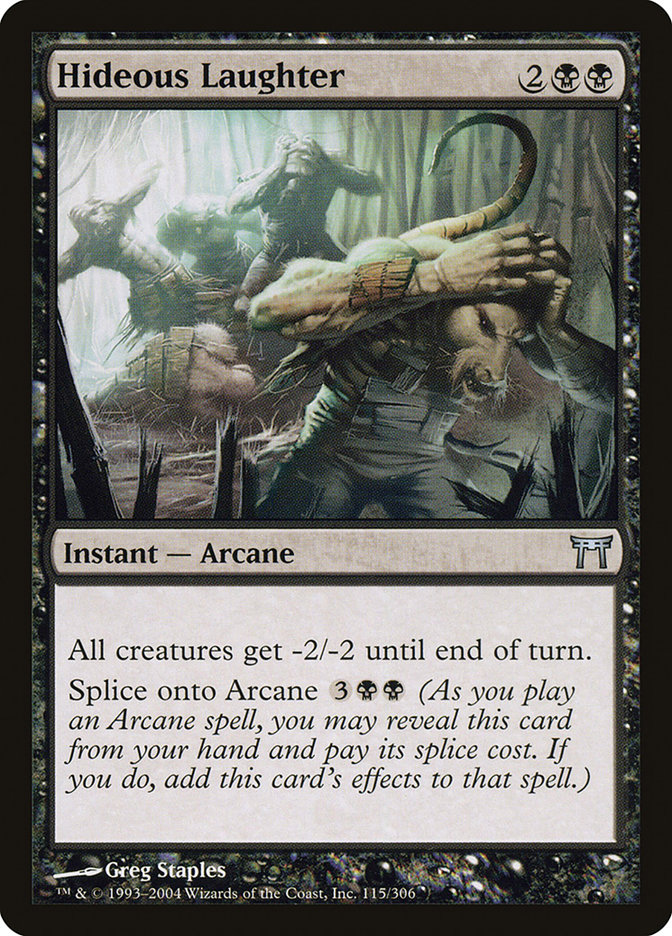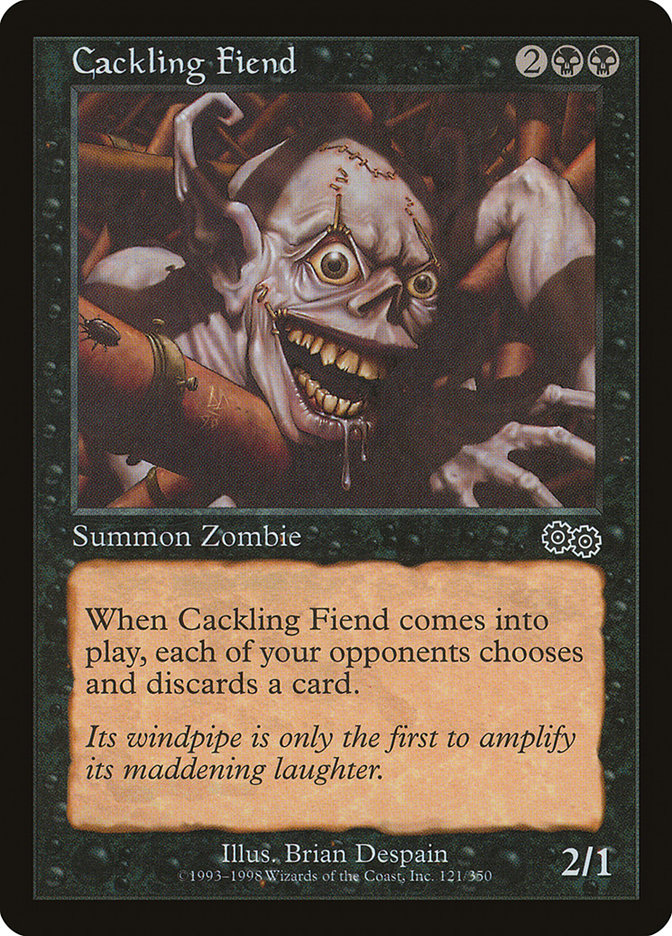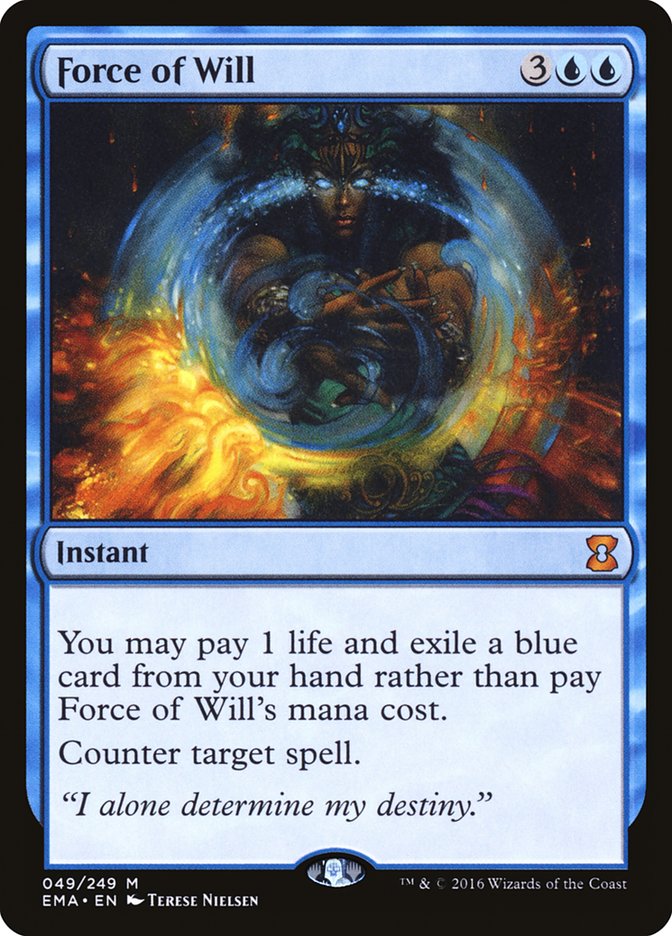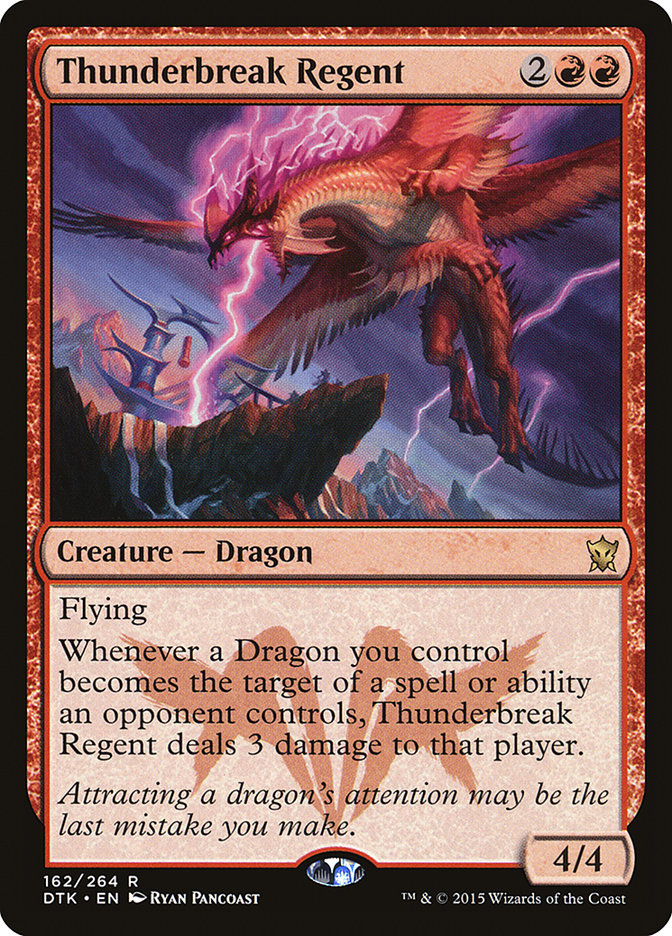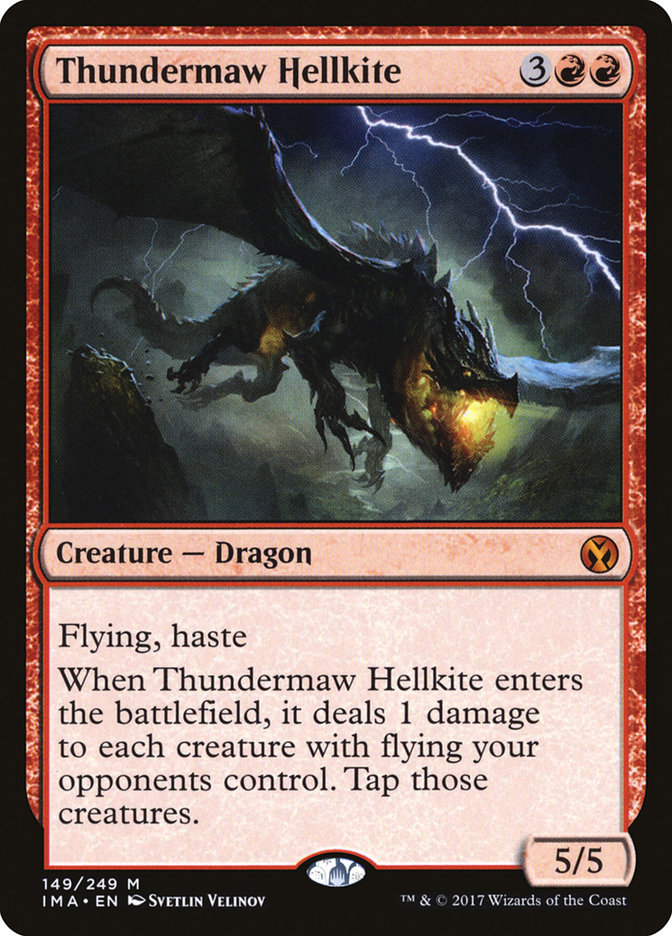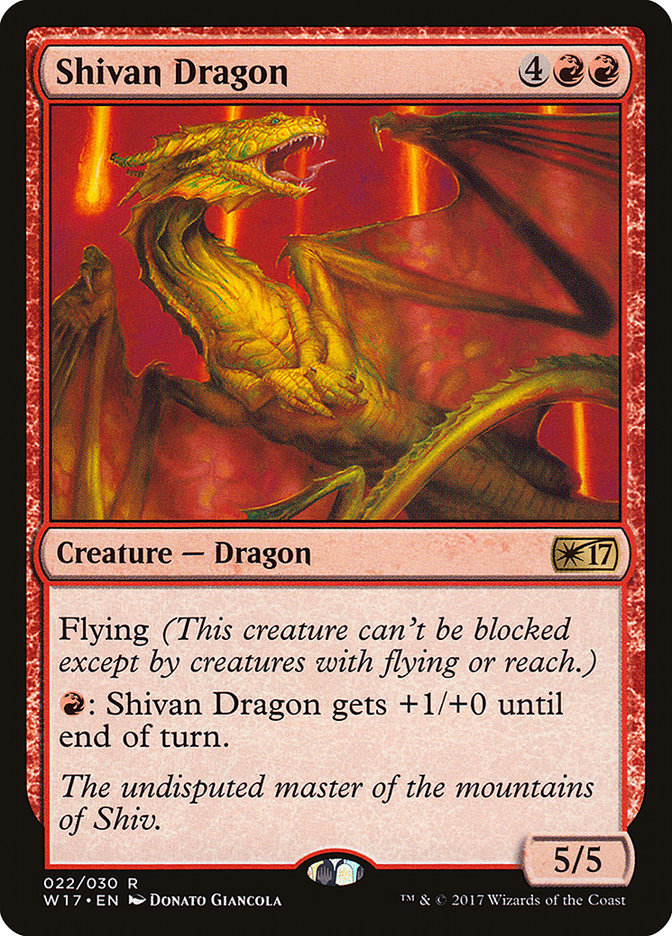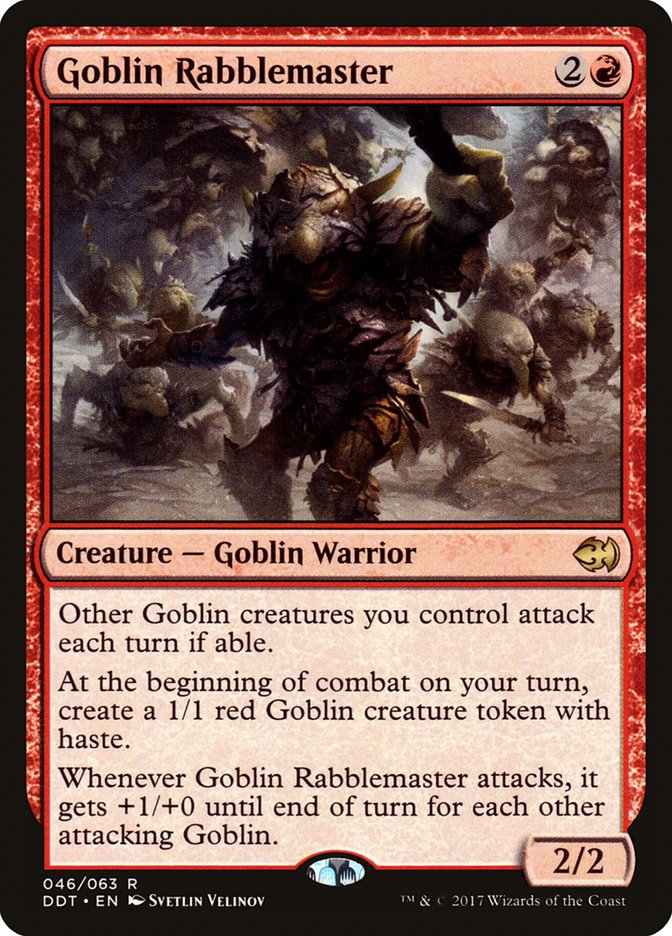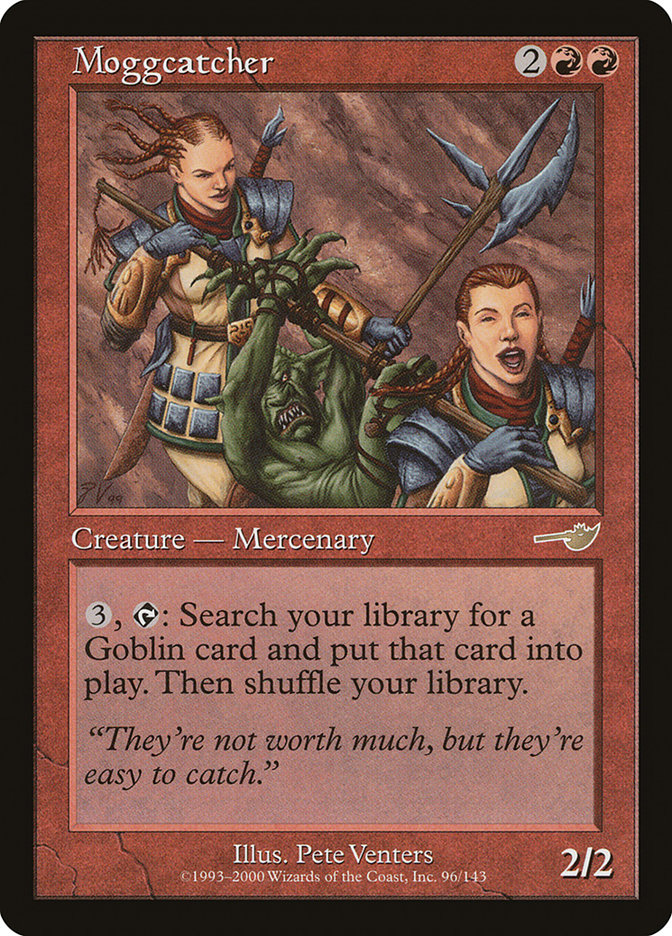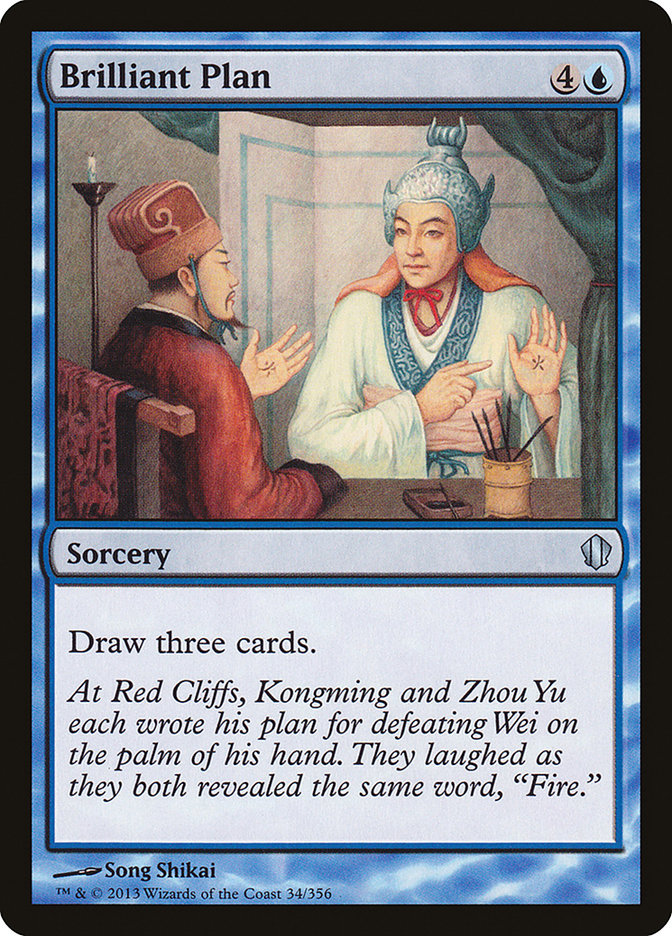While I may currently ride with (the dashingly good looking) Team BCW, for the previous two years I enjoyed many good times with my good friends in Team MGG.
In the latter half of 2017 I rekindled my on-and-off relationship with Urza’s Tower, starting to play G/B Tron again in Modern event after Modern event. The guys on the team gave me some ribbing for not playing a “real” deck, and when I chose to play Legacy B/R Reanimator at the SCG Tour Legacy stop in Washington DC last year, Frank Skarren asked me very bluntly, “Why do you keep playing these ‘Chuckler’ decks?”
Frank was assumedly concerned for my tournament success and felt I would be better-suited playing a more “skill-intensive” deck than Tron or B/R Reanimator because I’m a skilled Magic player, but his attitude towards these decks is almost derogatory and very common. “Good” Magic players should win games of Magic by playing long, skillful games of Magic where they make many choices and ultimately emerge victorious because of their talent at the game.
Other wins aren’t really wins. You just drew well and/or got lucky.
This includes things like:
- Turn 3 natural Tron into Karn Liberated in Modern
- Turn 1 Chalice of the Void off a Simian Spirit Guide in Modern
- Turn 1 Dark Ritual, Entomb, Exhume a Griselbrand in Legacy
- Turn 1 Blood Moon off Ancient Tomb and Lotus Petal in Legacy
This phenomenon can be seen in almost all games and competition:
- A Zerg player 12-Pooling for an early cheese win (rather than trying to just play a standard, longer game and win via normal strategic means)
- A suicide squeeze bunt in baseball (rather than just trying to beat the pitcher and get a good solid hit)
- Using nothing but low sweep in Mortal Kombat (rather than fighting fairly dammit Matt, stop being cheap!)
The truth is that all of these strategies are legal and fair ways to play a game, but they feel worse to lose to because the loser doesn’t really get to “play.” One player’s “skill” was never really tested, and the perception is that these strategies do not require skill to execute.
While it’s true that they require less finesse and less “turn after turn” skill than a deck like Miracles or Grixis Delver, to say that “Chuckler” decks require no skill is both untrue and borderline toxic. Understanding these decks across their most common formats (Modern and Legacy) is an important skill. Even if you never intend on playing one, other people will. You must understand how they work and what is important if you wish to beat them.
Playing Chuckler Decks
When you play a deck like U/W Control in Modern or Four-Color Control in Legacy – AKA “the least-Chuckler decks available” – you never have an easy game. You’re going to play many, many turns over many matches, having to grind out every single advantage and close out every game. When your opponent stumbles you will never be able to capitalize, but when you stumble you will likely fall behind and lose.
Playing a Chuckler deck is the exact opposite.
While the games you just blow your opponents away in the first few turns are awesome, the games where they just mulligan into oblivion and are never able to assemble whatever good combination of cards they are looking for are frustrating. It feels helpless, but it’s just the tax you pay for your powerful and unbeatable hands. A deck needs to meet a certain criteria of constancy to do well in an event, but having a fail rate is not the end of the world.
So what are the important skills for a Chucker deck?
- Opening hand / Mulligan decisions
By far the most important skill of Chuckler decks is dealing with your opening hand. All-in decks don’t get to play lots of cards like Brainstorm or Ponder, which means your best draw spell is going to be your opening hand. Don’t be afraid to mulligan, and accept that fact that a nonzero amount of the time you’re going to mulligan into an unplayable four-card hand and basically lose on the spot.
- Sideboarding / Assessing what your opponent can do to stop you
Because Chuckler decks are very linear, your opponent may have powerful cards in their sideboard waiting to slow you down in Games 2 and 3. They also may have basic lands for your Blood Moon or Karakas for your huge creature in their maindeck, as well as the more standard interaction.
- Playing around your opponent’s interaction
Just because you don’t want to interact doesn’t mean you won’t have to. Figuring out how to best play around your opponent’s interaction, be it sideboard cards, basic lands, or the usual copies of Daze and Force of Will, you will need to figure out how to best pace your spells while still maintaining your speed.
The most important thing to understand is this:
You will make fewer choices, but the ones you make will matter a lot.
As such, mistakes will often be punished harshly.
Playing Against Chuckler Decks
The skills used against Chuckler decks are pretty much the same ones that they use. Considering how short the game is often going to be, your opening hand and mulligan choices are going to be paramount.
You may really want that Force of Will in case they have a Turn 1 Blood Moon on the play, but how deep do you need to go looking for it? What hands are good enough to accept the risk? What’s their fail rate?
They’re usually only going to play a few cards that actually matter. It’s your job to make sure you can stop them. As long as you can effectively keep them off their plan, most of their cards don’t really do anything. Again, there aren’t going to be a lot of choices, but the ones that are made are going to matter a lot. Because they are presenting the threats and you are answering them with incomplete information, the pressure will be on you to not make a mistake.
With Legacy on the horizon for #SCGWOR tomorrow, let’s look at three of the best “Chuckler” decks in Legacy right now.
Creatures (10)
Lands (13)
Spells (37)

B/R Reanimator is the most broken deck in Legacy.
The rate that this deck puts a huge, powerful creature onto the battlefield on Turn 1 is astounding. With so few lands, so much fast mana, and a no-nonsense light interaction package, there isn’t a scarier deck in the format. The deck also has the most genuinely unbeatable hands in the format:
This hand is almost completely unbeatable by any deck in the format on the play, and a heavy favorite against any deck on the draw. This is the kind of hand your friends will come to complain to you about in Round 6 of the Open and the reason why you play a deck like this.
Of course, you also sometimes end up with hands like this…
It’s a give and take.
It’s clear how important it is to not be afraid to mulligan with a deck like this because of how bad some of the opening hands look, and the deck has plenty of unbeatable six- and five-card hands. It’s also important to have a good plan for opponents’ interaction, which will most commonly be graveyard hate. Something like Show and Tell to sidestep the hate is nice, but it’s important to understand your other paths to victory as well.
In Washington DC I had an Eldrazi Post opponent mulligan to six and then smugly deploy a Turn 0 Leyline of the Void. So I Turn 1 Unmasked him; took his Ulamog, the Ceaseless Hunger; and cast Reanimate on it. I won the game two turns later.
The games that are easy are going to be easy, but when things aren’t working out, you must be able to get creative to find ways to win.
Creatures (24)
- 4 Moggcatcher
- 1 Kiki-Jiki, Mirror Breaker
- 2 Siege-Gang Commander
- 1 Goblin Settler
- 4 Simian Spirit Guide
- 1 Stingscourger
- 4 Magus of the Moon
- 1 Murderous Redcap
- 1 Tuktuk Scrapper
- 1 Krenko, Mob Boss
- 4 Goblin Rabblemaster
Lands (20)
Spells (16)

Mono-Red Stompy decks have been a part of Legacy forever and they’re basically just the following:
The other 40 cards usually don’t matter than much, because either your opponent can cast meaningful spells or they can’t. The Moggcatcher Goblin tutor package is super-sweet, while some versions of the deck play things like Chandra, Torch of Defiance or other singular threats.
The truth is that if the deck’s threats were literally just 4 Thunderbreak Regent, 4 Thundermaw Hellkite, and 4 Shivan Dragon, it wouldn’t have a monumental effect on the deck’s win percentage.
The only exception to this is Goblin Rabblemaster, which is the universal element in most Stompy lists; Goblin Rabblemaster can come down on Turn 1ne and kills very quickly, which is exactly what a deck looking to lock people out with Blood Moon is trying to do.
One of the more common ways these decks lose is that they stick a Turn 1 Chalice of the Void and Turn 2 Blood Moon, and then just sit there for seven turns while their opponent eventually draws out of it and finds some way to win. Closing the game is very important, and Goblin Rabblemaster does it best.
Still, the Moggcatcher package is very cool, allowing the deck some semblance of a fair game as well as the ability to answer a surprising array of threats. Even just the presence of Goblin Settlers plays well with the Blood Moon effects, giving you a way to completely lock people out of games. There are probably too many cute Goblins in the list, but it’s a nice start.
Our own Emma Handy took perhaps Legacy’s most notorious Chuckler deck to a Classic Top 8 last year, Goblin Charbelching her way through the field.
The poster child for glass cannon combo decks, Belcher completely exemplifies everything we have said about Chuckler decks. There’s a unique skill to playing the deck, but it’s all about managing your opening hand, mulligans, and what your opponent may have. It also exemplifies perhaps the most important skill of all when playing a Chuckler deck.
Going for It
When you play a slow control deck, you typically play in a very conservative manner. You always want to be cautious, and there’s no major reason to take risks because part of your gameplan is the game going long. As such, you can typically take the conservative line over and over again, eventually coming out on top. (It’s obviously more complicated than that, but if you always defaulted to the conservative play as a control player, you would still be a winning player.)
Chuckler decks don’t have that luxury.
Every turn you delay is a turn your opponent is closer to destroying the advantage you get of cheesing them out in the early turns. Knowing when to fire it off and just go for it is a skill all good combo players have, yet is further exemplified when you are operating in such a small window of opportunity. Should you play around that Daze? What if they have Force of Will? Should you give them a chance to draw a discard spell?
These are very hard questions to answer.
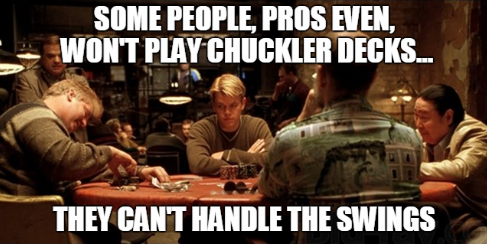
Chuckler decks offer a lot of power at great risk. It takes stones to play a Chuckler deck, and not everyone can handle it.
Can you?
(P.S. Please don’t Turn 1 Blood Moon me this weekend at #SCGWOR, thanks!)


